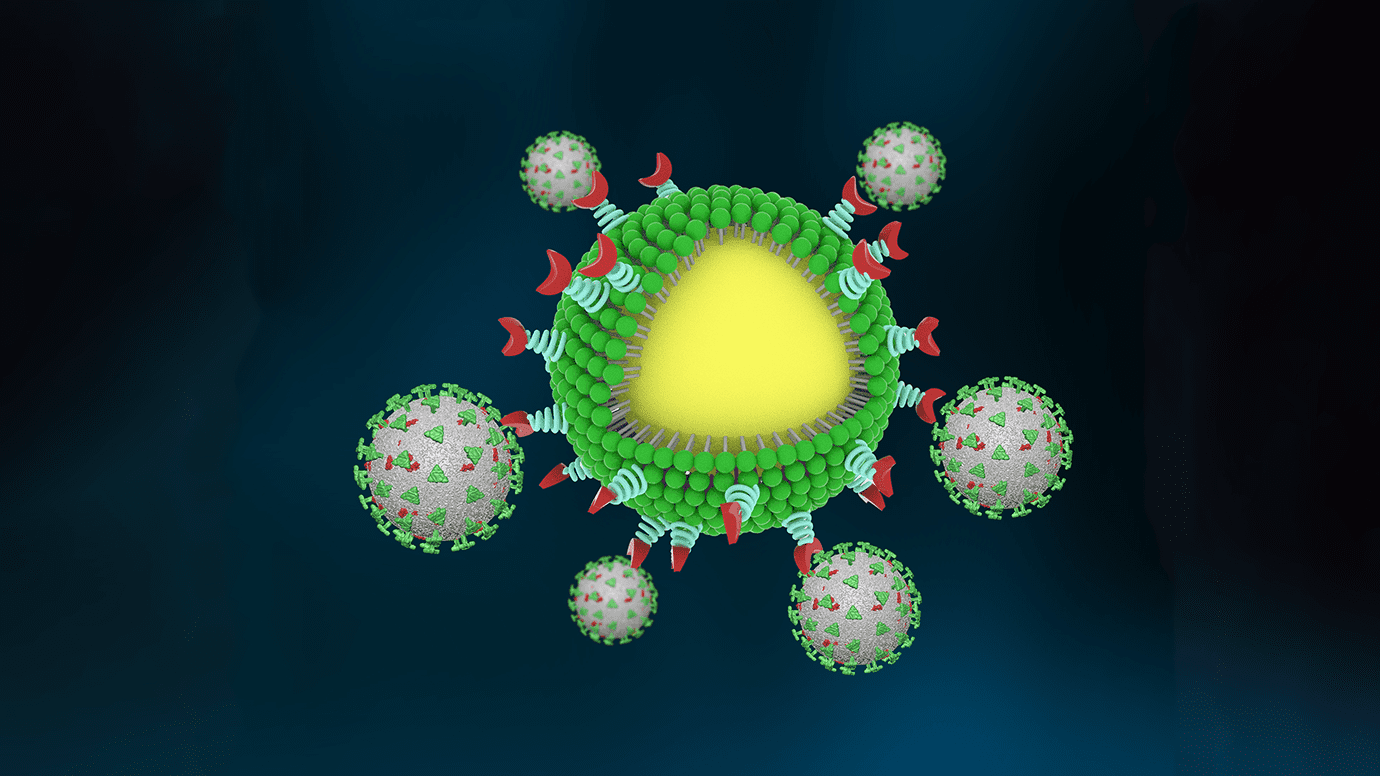
Nanoparticles derived from tea leaves inhibit the growth of lung cancer cells, destroying up to 80% of them, new research by a joint Swansea University and Indian team has shown.
The team made the discovery while they were testing out a new method of producing a type of nanoparticle called quantum dots. These are tiny particles which measure less than 10 nanometres. A human hair is 40,000 nanometres thick.
Although nanoparticles are already used in healthcare, quantum dots have only recently attracted researchers’ attention. Already they are showing promise for use in different applications, from computers and solar cells to tumour imaging and treating cancer.
Quantum dots can be made chemically, but this is complicated and expensive and has toxic side effects. The Swansea-led research team were therefore exploring a non-toxic plant-based alternative method of producing the dots, using tea leaf extract.
Tea leaves contain a wide variety of compounds, including polyphenols, amino acids, vitamins and antioxidants. The researchers mixed tea leaf extract with cadmium sulphate (CdSO4) and sodium sulphide (Na2S) and allowed the solution to incubate, a process which causes quantum dots to form. They then applied the dots to lung cancer cells.
The researchers found:
- Tea leaves are a simpler, cheaper and less toxic method of producing quantum dots, compared with using chemicals, confirming the results of other research in the field.
- Quantum dots produced from tea leaves inhibit the growth of lung cancer cells. They penetrated into the nanopores of the cancer cells and destroyed up to 80% of them. This was a brand new finding, and came as a surprise to the team.
The research, published in “Applied Nano Materials”, is a collaborative venture between Swansea University experts and colleagues from two Indian universities.

Picture: microscope images of A549 lung cancer cells: left, untreated; right, treated with quantum dots
Dr Sudhagar Pitchaimuthu of Swansea University, lead researcher on the project, and a Ser Cymru-II Rising Star Fellow, said:
“Our research confirmed previous evidence that tea leaf extract can be a non-toxic alternative to making quantum dots using chemicals.
The real surprise, however, was that the dots actively inhibited the growth of the lung cancer cells. We hadn’t been expecting this.
The CdS quantum dots derived from tea leaf extract showed exceptional fluorescence emission in cancer cell bioimaging compared to conventional CdS nanoparticles.
Quantum dots are therefore a very promising avenue to explore for developing new cancer treatments.
They also have other possible applications, for example in anti-microbial paint used in operating theatres, or in sun creams.”
Dr Pitchaimuthu outlined the next steps for research:
“Building on this exciting discovery, the next step is to scale up our operation, hopefully with the help of other collaborators. We want to investigate the role of tea leaf extract in cancer cell imaging, and the interface between quantum dots and the cancer cell.
We would like to set up a “quantum dot factory” which will allow us to explore more fully the ways in which they can be used.”
Learning more: Quantum dots: tiny nanoparticles derived from tea leaves destroy lung cancer cells
The Latest on: Plant-based quantum dots
[google_news title=”” keyword=”plant-based quantum dots” num_posts=”10″ blurb_length=”0″ show_thumb=”left”]
via Google News
The Latest on: Plant-based quantum dots
- One step closer to a sci-fi reality—NASA announces funding for a quantum dot solar sail and a levitating train on the Moonon May 3, 2024 at 8:22 am
Other potential projects set to receive additional funding include a pulsed plasma rocket, a "fluidic telescope" designed to be a space-based optical observatory, and a radioisotope thermoradiative ...
- Quantum Dots: Heralding a Brighter Future for Clinical Diagnosticson May 1, 2024 at 5:00 pm
Semiconductors have a valence band that is filled with electrons and an empty conduction band separated by a band gap (also called energy gap). For an electron to be excited into the conduction ...
- Unraveling the efficiency losses and improving methods in quantum dot-based infrared up-conversion photodetectorson May 1, 2024 at 1:33 pm
A new publication from Opto-Electronic Science; DOI 10.29026/oes.2024.230029 discusses unraveling the efficiency losses and improving methods in quantum dot-based infrared up-conversion photodetectors ...
- Quantum dots articles from across Nature Portfolioon April 30, 2024 at 5:00 pm
Quantum dots are crystals of a fluorescent semiconductor material with a diameter of as few as 10 to 100 atoms (2-10 nm). They are used as labels for imaging molecules because of their very narrow ...
- “Truly Amazing” – Quantum Dots Successfully Synthesized Inside Living Cells!on April 24, 2024 at 11:43 pm
A recent study published in the journal National Science Review demonstrates the synthesis of quantum dots (QDs) in the nucleus of live cells. The research was conducted by Dr. Hu Yusi, Associate ...
- 'Neutronic molecules': Study shows neutrons can bind to quantum dotson April 2, 2024 at 4:59 pm
the neutronic quantum dots could be used for storing quantum information. This work is based on theoretical calculations and computational simulations. "We did it analytically in two different ...
- How to grow inorganic functional nanomaterials—quantum dots—in the nucleus of live cellson April 2, 2024 at 4:59 pm
National Science Review recently published research on the synthesis of quantum dots (QDs) in the nucleus of live cells by Dr. Hu Yusi, Associate Professor Wang Zhi-Gang, and Professor Pang Dai ...
- A Synthesis for Quantum Dots, Born of Necessity, Unlocks a Nano-world of Opportunitieson March 29, 2024 at 10:21 am
Bawendi, now the Lester Wolfe Professor of Chemistry at the Massachusetts Institute of Technology, was awarded the 2023 Nobel Prize in chemistry in October for his pioneering work in producing quantum ...
- Coffee grounds can help prevent neurological disorders - researchon November 24, 2023 at 5:16 am
"Caffeic-acid based Carbon Quantum Dots have the potential to be transformative ... a family of compounds called polyphenols, which are plant-based compounds known for their antioxidant, or ...
via Bing News










